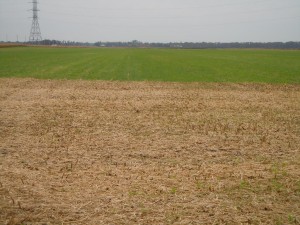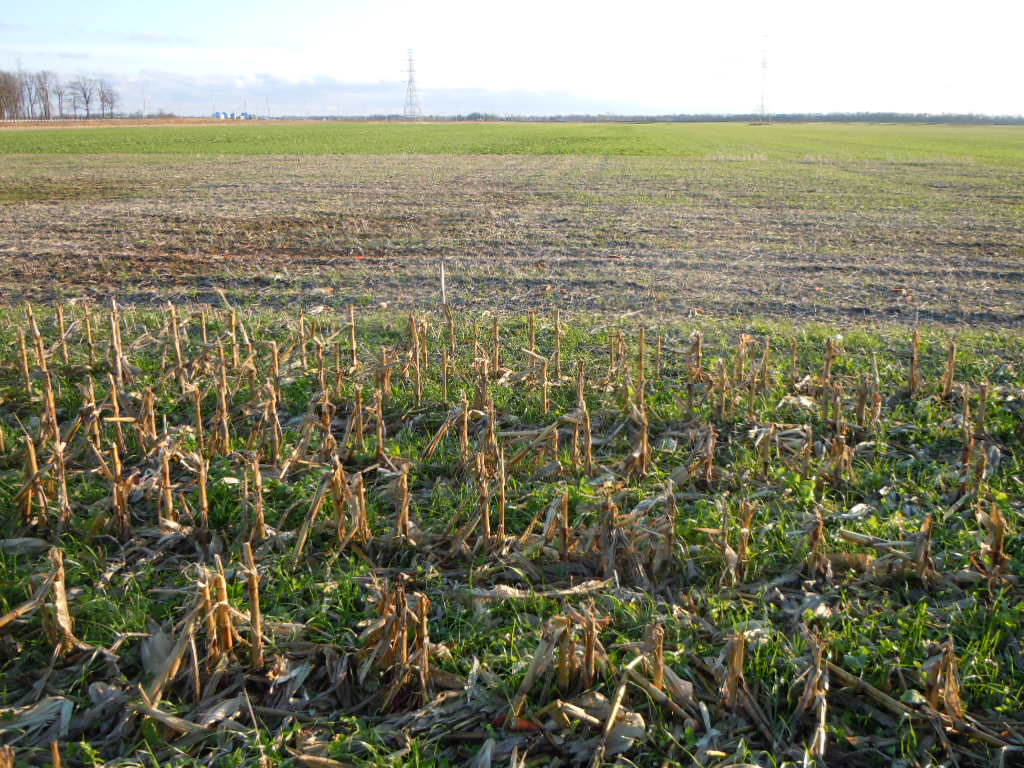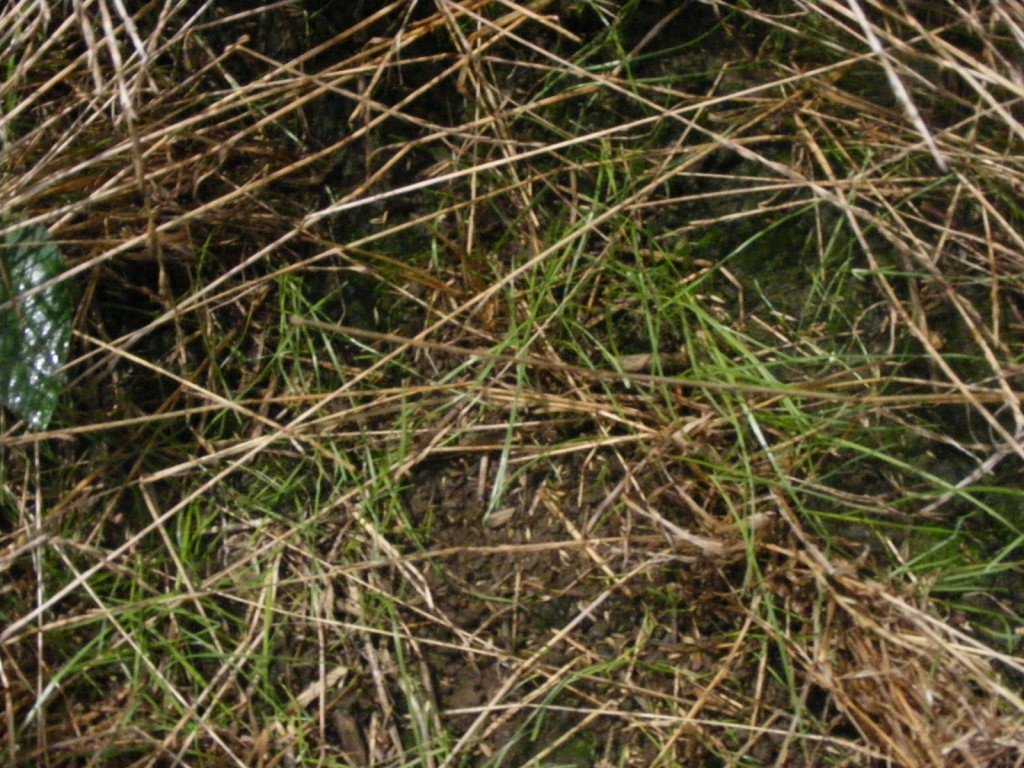
In previous posts I have shared about the importance of applying cover crops at the correct time. I also looked at the difference in how cover crops emerged in corn and soybean fields when aerial applied in the fall of 2011. In the past several weeks I have traveled over much of Indiana and northwestern Ohio looking at aerial applied cover crops.
Four things I have noticed so far:
1) Aerial applicators seem to be doing a much better job in 2011 than in years past.
2) Correct timing of aerial application into cash crops is vital (that the crops are mature enough for cover crop success).
3) Corn and soybean variety maturity differences can change “success” rates.
4) It appears that row spacing in soybeans makes a big difference, especially in establishing crimson clover.
I was in a soybean field in Jasper County, IN, with Dan Perkins, SWCD Watershed and Conservation Program Specialist. It looked as though about one-half of the field had been harvested a week or so earlier than the other half because the cover crops were considerably taller and more dense in the earlier bean maturity area than in the later bean maturity part of the field.
But I was wrong about the harvest date…there was only 1 day harvest difference between the two areas. One difference was the genetic maturity of the varieties of soybeans. One variety was a 3.0 maturity and the other was a 3.4 maturity. Incidentally, the farmer reported that the two varieties yielded virtually the same.
Another key observation was made with differences in row spacing, particularly with crimson clover. In the 15″ and 30″ rows the crimson clover looked very good with an even stand and good growth. But in the fields with 7″ rows the stand did not look quite as good. In fact, in some fields with 7″ rows, the crimson clover was hard to find. The annual ryegrass and the cover crop radishes had a better stand than the crimson clover in the 7″ spaced rows, yet even they had considerably less growth than in the wider spaced rows.
Why does this matter? It matters because P-H-O-T-O-S-Y-N-T-H-E-S-I-S matters.
In many eastern corn belt soybean fields that the cover crops were aerial applied in are quite varied this year. Overall there has been very good moisture and adequate time for the cover crops to germinate and grow, but the rate of growth has varied considerably based on how mature the soybeans were at planting date. While the soybeans have been off for over a month as of this posting you can look at the photo taken on November 22 and still see a difference in cover crop “coverage” and growth.
The stands have been good over all but the amount of growth from that stand seems to vary a bit more than in past years.
The take-home message is that we need to make sure that crops are mature enough when applying cover crops. And if planting into fields with 7″ rows, maybe wait until 75% leaf yellowing to assure more sunlight hitting the ground when the seed is germinating. Sunlight really is important…just like my 9th grade biology teacher said it was.

